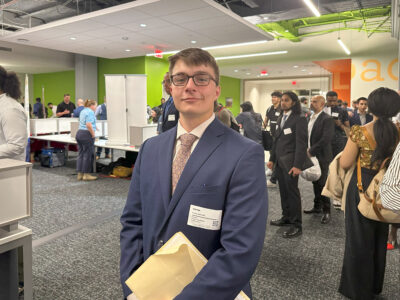The Chamber of Commerce for Greater Philadelphia met for its annual, top of the year economic outlook Friday morning. Following a keynote by FS Investments economist Lara Rhame, four local leaders sat down to talk about the nitty-gritty of what they’re seeing in their respective industries.
The group represented the industries like finance, sports and entertainment, convenience and talent. Reporter Bill Anderson from Fox 29 moderated the discussion with Federal Reserve Bank of Philadelphia President and CEO Patrick Harker, Wawa President and CEO Chris Gheysens, talent search firm O’Conner Group founder Marcia O’Connor, and Philadelphia Eagles President Don Smolenski.
Strong economic activity
Harker kicked off the talk with a summary of Chamber members survey, which named higher prices for goods and services as well as available labor as top concerns heading into 2023. Surveyed members said availability of financing and interest rates were also worrying them.
While 2022 did bring some layoffs, members actually reported more full-time employees last year than they did in 2021. And while they’re wary about economic conditions, they also reported strong activity in the region and with their own businesses in 2022.
That rings true for Wawa, which has doubled its store count in the last decade, up from 900 to 1,800 by the end of 2022, Gheysens said. Although the convenience store brand recently closed several Center City locations, the company’s leaders are reassessing how those very public, busy storefronts can be used.
For example, the storefront at 19th and Market streets is getting a technical overhaul, the CEO said. Though he didn’t give specific details about what the space might hold, he said it could possibly be used for trainings or for tech ecosystem purposes.
“We’ve been on a journey, a digital transformation,” Gheysens said. “For us, it meant our consumer-facing systems — think of when you walk into a Wawa, the point-of-sale touchscreen, your mobile app. We’ve moved our shop from a buying implement to a building implement.”
Retention > recruiting
O’Connor shared insight into the current labor market: Employers who want to save money during this expensive time to do businesses should look inward, she said, as retaining talent is much cheaper than replacing it. Overworking, burnout and mental health are main issues she’s hearing from people who are deciding to leave their jobs.
A light and tight labor market is here to stay for a while.
Offering resources around career pathing, or helping employers and employees understand where their career can go, has been on the rise, O’Connor said. And Philly ought to play to its strengths: The region’s “booming” life sciences sector will continue to grow, but it will take a dedicated strategy to properly staff those companies. There are currently about 70,000 people working in the industry, she said, and more companies serving the space pop up every year.
Such strategies could include assessing whether qualifications like a college degree are really necessary, or if apprenticeships or other training programs can help get young people or career changers into these lucrative and growing jobs.
“Because of COVID, we are going through a massive shift of how we work,” O’Connor said. “I think we need to be patient and understanding. I do believe a light and tight labor market is here to stay for a while.”
The labor market was tight before the pandemic, Harker said, although the pandemic created some new challenges. Boomers are retiring early, millions who died from COVID-19 globally left holes in labor markets, and recent immigration policy has left “about 2 million foreign workers” out of the US market. Employers need to bring people “off the sideline,” he said, with policies like subsidized or free childcare that would bring mothers who were priced out back to the workforce.
Macro effects
While labor and rising costs are the day-to-day issues businesses are dealing with, Harker is concerned, too, about macroeconomic issues like bringing down inflation while maintaining economic growth. Tactics like public-private workforce development partnerships and investing in tech programs work toward these goals.
But it also comes down to policy. Harker thinks lowering rates to right around 5% and keeping them could help stabilize prices and “execute some sort of soft landing.” (As of this writing, interest rates are closer to 6%.) While everyone feels the effects of inflation, it hurts low- and moderate-income households and families the most, he said.
“If you think about the situation we’re in in the Philadelphia region, but also nationally, there’s a lot of rhetoric on all sides,” Harker said. “But then there’s people who are rolling up their sleeves and making the difference.”

This editorial article is a part of Navigating a (Possible) Recession Month 2023 in Technical.ly’s editorial calendar.
Before you go...
Please consider supporting Technical.ly to keep our independent journalism strong. Unlike most business-focused media outlets, we don’t have a paywall. Instead, we count on your personal and organizational support.
Join our growing Slack community
Join 5,000 tech professionals and entrepreneurs in our community Slack today!





